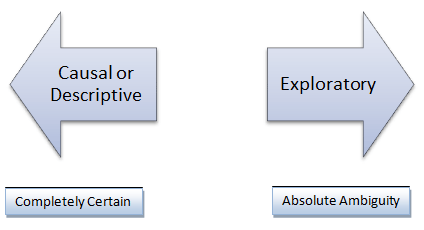Conjoint Analysis – Meaning, Usage and its Limitations
April 3, 2025
 Conjoint Analysis – Meaning, Usage and its Limitations
Conjoint Analysis – Meaning, Usage and its Limitations
Introduction During the sixties, when researchers tried to understand consumers’ decision making process, they used a simple questionnaire or a form. Respondents would generally answer what was on the top of their minds or what they assumed the researcher wanted to hear. However, this did not always correspond to their actual purchase decisions. For example,…
 What Is the Purpose of a Management Case Study?
What Is the Purpose of a Management Case Study?
A management case study is an in-depth study of a project, challenge, or phenomenon within a business. By focusing on real-world examples, management case studies allow researchers to explore how businesses actually operate, revealing the systems, behaviors, and choices that drive success…or lead to failure. In this guide, we’re taking a closer look at the…
 What is Big Data and its Importance to Businesses as a Game Changer
What is Big Data and its Importance to Businesses as a Game Changer
What is Big Data? If marketers had all the data about consumers that they can then use to predict consumer behavior, which would be the marketers dream come true. Until now, marketers had enough data about consumers that they then modeled to arrive at probable consumer behavior decisions. This data culled from marketing research was…
Research can be categorized either on the basis of technique (surveys, experiments, observation studies, etc) or on the basis of purpose. We will look at the techniques in the subsequent chapters. Now let us focus on the 3 methods of doing Marketing Research based on purpose:
As the name implies, exploratory research is the initial exploration done to get an idea and insights into the problem. Research is a relatively expensive process; exploratory research ensures that this process is not initiated without a thorough understanding of the problem. This study is qualitative (understanding the concept) rather than quantitative (providing precise measurement). Also, this type of research does not give conclusive evidence and subsequent research needs to be done.
Further, the following purposes justify the use of exploratory research:
A widely used method for executing exploratory research for this purpose is Concept Testing. Here, target consumers are introduced to an idea and asked how they feel about it, whether they are likely to use it, etc. It tests the likeability or acceptability of the new product before investing in its research and development.
This type of research is used when there is some comprehension of the problem, objectives are defined and the research questions are clearly formulated. Contrary to exploratory research, the proof descriptive research provides is used for formulating action plans. It helps answer the questions ‘when’, ‘who’, ‘what’, ‘how’ and ‘where’, but not ‘why’.
Descriptive research typically gives a detailed account of the characteristics or behaviour of a population. Hence the research work usually involves some element of consumer profiling and market segmentation.
Experimental studies demonstrate cause and effect relationships. They try to decipher the outcome marketing actions might have. For example, it is used when the purpose is to determine the impact of increase in price on usage.
This research is used in succession to exploratory and descriptive research and hence sufficient knowledge is gained on the topic by then. Experimental research is also popularly known as causal research.
The extent of uncertainty also affects what type of method should be chosen. The more well defined the situation is, the more the research agency will move from exploratory to descriptive to experimental research.

Degree of Problem Interpretation
The following cases will further help understand the significance of each type of research:
|
Your email address will not be published. Required fields are marked *